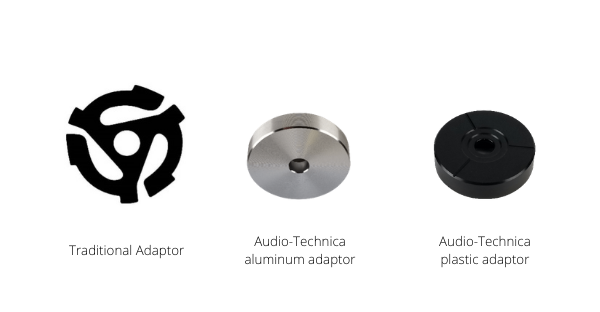Question: What do I need to know about 45 RPM records?
Answer: The 7-inch, 45 RPM record was introduced by RCA Victor in 1949. Playing at a speed of 45 revolutions per minute, this type of record is often referred to as a “single” or, simply, a “45.” 45 RPM records became very popular in the 1950s and 1960s. One thing to note is the large hole in the center of most 45 RPM records. There was, however, something of a “format war,” mostly between producers in the U.S. and the U.K., that resulted in center holes of different sizes. The U.K. opted for a 0.25-inch hole, which is the size of the spindle on a turntable. The U.S. went with the 1.5-inch hole. You will find both formats, but the 1.5-inch hole is the most prevalent. Just as a side note, you will also find some 12-inch records that were mastered – and must be played – at 45 RPM. These are not very common, however, and should be clearly labeled as 45 RPM records.
In order to play a 45 RPM record that has a 1.5-inch hole, you must use an adapter that has an outside diameter of 1.5 inches and a 0.25-inch hole in the center.

Traditional adapters were attached inside the hole of the record and then placed over the spindle. The plastic and aluminum adapters that Audio-Technica offers fit over the spindle and rest on the platter, creating a wider spindle for the record’s 1.5-inch hole.
Please note that a 45 RPM record with a 0.25-inch hole does not need an adapter and should be placed over the turntable’s spindle-like a 33-1/3 RPM record.
Hopefully, you now have a better understanding of 45 RPM records and how to play them. As always, feel free to contact the Audio-Technica Audio Solutions Department for more information.